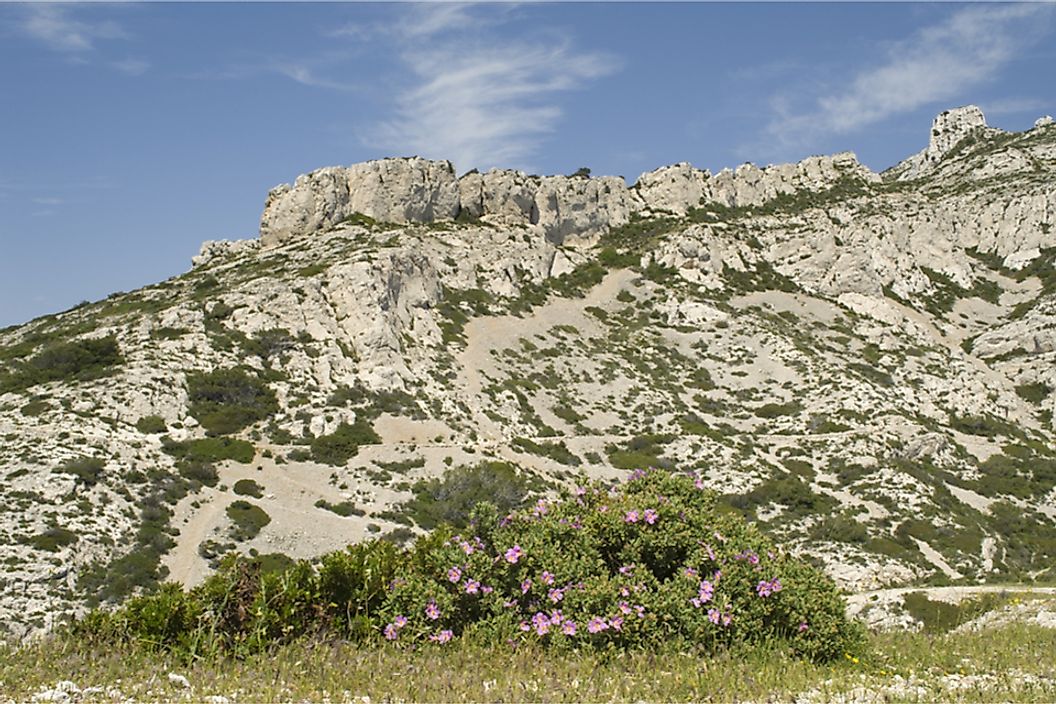What Is a Calanque?

A calanque is a coastal landscape features unique to the Mediterranean coast. Derived from Mediterranean etymology, the term refers to a narrow valley with deep sides formed by erosion or the collapse of a roof of a cave in areas with dolomite, limestone, or other carbonate strata.
Where Are Calanques Located?
Calanques are a Mediterranean landscape feature, the most famous being the Massif des Calanques in France. The highest cliffs on Massif des Calanques are Mont Puget and Marseilleverye, which are 1854 feet and 1417 feet high, respectively. Additional calanques are located on the French Riviera, and the Italian Apennines are another prime example.
Formation of Calanques
Calanques are considered to be geologically young landscape features which are formed when coastal valleys were submerged due to flooding during the Holocene period. The Holocene is the current geological epoch, which began in approximately 11,000 BCE and continues to date. The formation of the valleys is older and is thought to have begun approximately 5.5 million years ago during the Messinian salinity crisis. The Messinian salinity crisis was characterized by the Mediterranean Sea's water level dropping by 5000 feet after it was isolated from the Atlantic Ocean. This caused the rivers draining into the sea to deepen their deltas by thousands of feet. During this period, karstic dry valleys were also formed when caves created by the receding sea levels collapsed. These valleys have since enlarged and new ones have formed as a result of the fluvial and karstic process in interglacial periods. The interglacial periods are characterized by sea level fluctuations up to 300 feet. Nowadays, the deep and narrow valleys are flooded due to the high sea levels. The steep valleys with sides made of granite or limestone are named calanques.
Calanque Ecology
The impoverished soil of calanques are a unique and challenging environment for plants and animals. The limestone cliffs are full of cracks which allow plants to anchor roots. The challenges associated with the steepest calanque habitats have spawned endemic plants such as Sabline De Marseille and Marseille Tragacanth, which are exclusively found in Marseille. In less steep cliffs, the vegetation is typical of a Mediterranean coastline, referred to as maquis, which typically consists of shrubby evergreen plants such as juniper, sage, and myrtle that grow to 6 to 13 feet high. Calanques are typically arid, and most moisture comes from windblown saline sea spray. Consequently, vegetation tends to be sensitive to disturbance. Animals that live in calanques have co-evolved with vegetation and show significant adaption to the local flora. Animals that live in calanques include foxes, wild boars, rabbits, crows, Bonelli's eagles, and a wide range of reptiles.
Tourism in Calanques
The coastal cliffs associated with calanques make for mesmerizing panoramas which are popular with tourists. The Cosquer cave is one of the most famous calanques, but is inaccessible. When sea levels were lower than they are presently, the calanques were inhabited, and are adorned with paintings that have been dated between 19,000 BC and 27,000 BC. The paintings depict sea and terrestrial animals such as seals, horses, auks, bison, and ibex.











